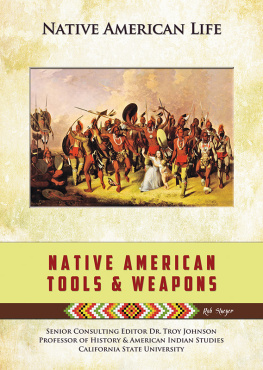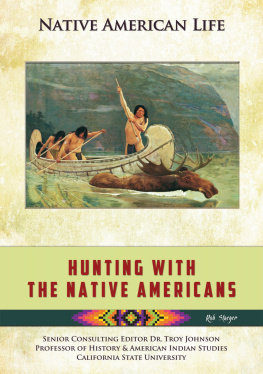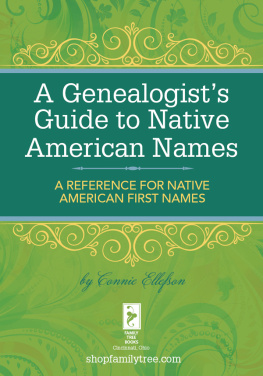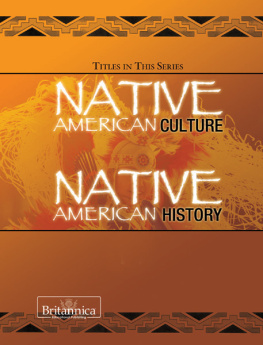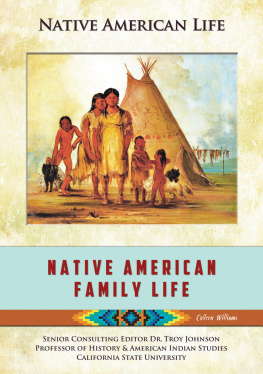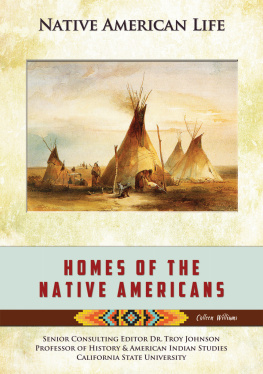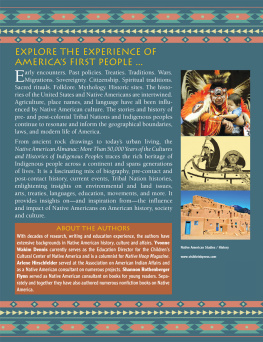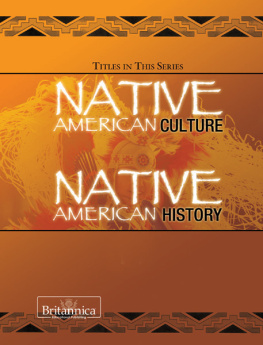NATIVE AMERICAN TOOLS AND WEAPONS
Rob Staeger

NATIVE AMERICAN LIFE
E UROPEANS AND N ATIVE A MERICANS
H OMES OF THE N ATIVE A MERICANS
H UNTING WITH THE N ATIVE A MERICANS
N ATIVE A MERICAN C ONFEDERACIES
N ATIVE A MERICAN C OOKING
N ATIVE A MERICAN F AMILY L IFE
N ATIVE A MERICAN F ESTIVALS AND C EREMONIES
N ATIVE A MERICAN H ORSEMANSHIP
N ATIVE A MERICAN L ANGUAGES
N ATIVE A MERICAN M EDICINE
N ATIVE A MERICAN R ELIGIONS
N ATIVE A MERICAN R IVALRIES
N ATIVE A MERICAN S PORTS AND G AMES
N ATIVE A MERICAN T OOLS AND W EAPONS
W HAT THE N ATIVE A MERICANS W ORE
NATIVE AMERICAN TOOLS AND WEAPONS
Rob Staeger

A collection of tools and artifacts from various Native American cultures.
S ENIOR C ONSULTING E DITOR D R . T ROY J OHNSON
P ROFESSOR OF H ISTORY AND A MERICAN I NDIAN S TUDIES
C ALIFORNIA S TATE U NIVERSITY

 | Mason Crest
450 Parkway Drive, Suite D
Broomall, PA 19008
www.masoncrest.com |
2014 by Mason Crest, an imprint of National Highlights, Inc.
All rights reserved. No part of this publication may be reproduced or transmitted in any form or by any means, electronic or mechanical, including photocopying, recording, taping, or any information storage and retrieval system, without permission from the publisher.
Printed and bound in the United States of America.
CPSIA Compliance Information: Batch #NAR2013. For further information,
contact Mason Crest at 1-866-MCP-Book
First printing
1 3 5 7 9 8 6 4 2
Library of Congress Cataloging-in-Publication Data
Staeger, Rob.
Native American tools and weapons / Rob Staeger.
pages cm. (Native American life)
Includes bibliographical references and index.
ISBN 978-1-4222-2977-4 (hc)
ISBN 978-1-4222-8864-1 (ebook)
1. Indians of North AmericaImplementsJuvenile literature.
2. Indian weaponsNorth AmericaJuvenile literature. I. Title.
E98.I4S73 2013
621.9008997dc23
2013007316
Native American Life series ISBN: 978-1-4222-2963-7
TABLE OF CONTENTS
INTRODUCTION
For hundreds of years the dominant image of the Native American has been that of a stoic warrior, often wearing a full-length eagle feather headdress, riding a horse in pursuit of the buffalo, or perhaps surrounding some unfortunate wagon train filled with innocent west-bound American settlers. Unfortunately there has been little written or made available to the general public to dispel this erroneous generalization. This misrepresentation has resulted in an image of native people that has been translated into books, movies, and television programs that have done little to look deeply into the native worldview, cosmology, and daily life. Not until the 1990 movie Dances with Wolves were native people portrayed as having a human persona. For the first time, native people could express humor, sorrow, love, hate, peace, and warfare. For the first time native people could express themselves in words other than ugh or Yes, Kemo Sabe. This series has been written to provide a more accurate and encompassing journey into the world of the Native Americans.
When studying the native world of the Americas, it is extremely important to understand that there are few universals that apply across tribal boundaries. With over 500 nations and 300 language groups the worlds of the Native Americans were diverse. The traditions of one group may or may not have been shared by neighboring groups. Sports, games, dance, subsistence patterns, clothing, and religion differedgreatly in some instances. And although nearly all native groups observed festivals and ceremonies necessary to insure the renewal of their worlds, these too varied greatly.
Of equal importance to the breaking down of old myopic and stereotypic images is that the authors in this series credit Native Americans with a sense of agency. Contrary to the views held by the Europeans who came to North and South America and established the United States, Canada, Mexico, and other nations, some Native American tribes had sophisticated political and governing structuresthat of the member nations of the Iroquois League, for example. Europeans at first denied that native people had religions but rather worshiped the devil, and demanded that Native Americans abandon their religions for the Christian worldview. The readers of this series will learn that native people had well-established religions, led by both men and women, long before the European invasion began in the 16th and 17th centuries.
Gender roles also come under scrutiny in this series. European settlers in the northeastern area of the present-day United States found it appalling that native women were treated as drudges and forced to do the mens work in the agricultural fields. They failed to understand, as the reader will see, that among this group the women owned the fields and scheduled the harvests. Europeans also failed to understand that Iroquois men were diplomats and controlled over one million square miles of fur-trapping area. While Iroquois men sat at the governing council, Iroquois clan matrons caucused with tribal members and told the men how to vote.
These are small examples of the material contained in this important series. The reader is encouraged to use the extended bibliographies provided with each book to expand his or her area of specific interest.
Dr. Troy Johnson
Professor of History and American Indian Studies
California State University

A humpback whale. The Nootka people of the Pacific Northwest hunted these enormous sea mammals from 30-foot-long dugout canoes.
The night before, the Nootka men had danced. They had danced so that they would not need to go to sea. It was time for the whale hunt, but whale hunts were dangerous. Their dance was to make a dying whale drift to shore. That way, everyone could eat and still be safe.
But a whale had not arrived.
The men stripped down and painted their faces black. They pushed their dugout canoe into the water off Vancouver Island. Their wives were not on the shore to see them go. They were at home, lying still in their beds. The women did not eat or speak. They did not even sleep. Their stillness and their concentration was another ritual. It would protect their husbands at sea.
The chief rode at the head of a 30-foot boat. The eight-man crew paddled out to sea. After a while, they spotted a whale resting on the surface. Silently, they brought the boat around behind it. As they approached, the chief steadied his harpoon. It was made from yew wood. It had a sharp tip with two barbs on it. The barbs would keep the harpoon in a whale when it tried to pull away. The barbs were nicknamed man and woman.
Suddenly, the chief hurled his harpoon, spearing the whale. In reaction, the whale dove. The harpoon was attached to 600 feet of rope. The crew hurried to let it out of the boat. This was the most dangerous part of the hunt. The rope had to be let out quickly, yet carefully.
Next page
